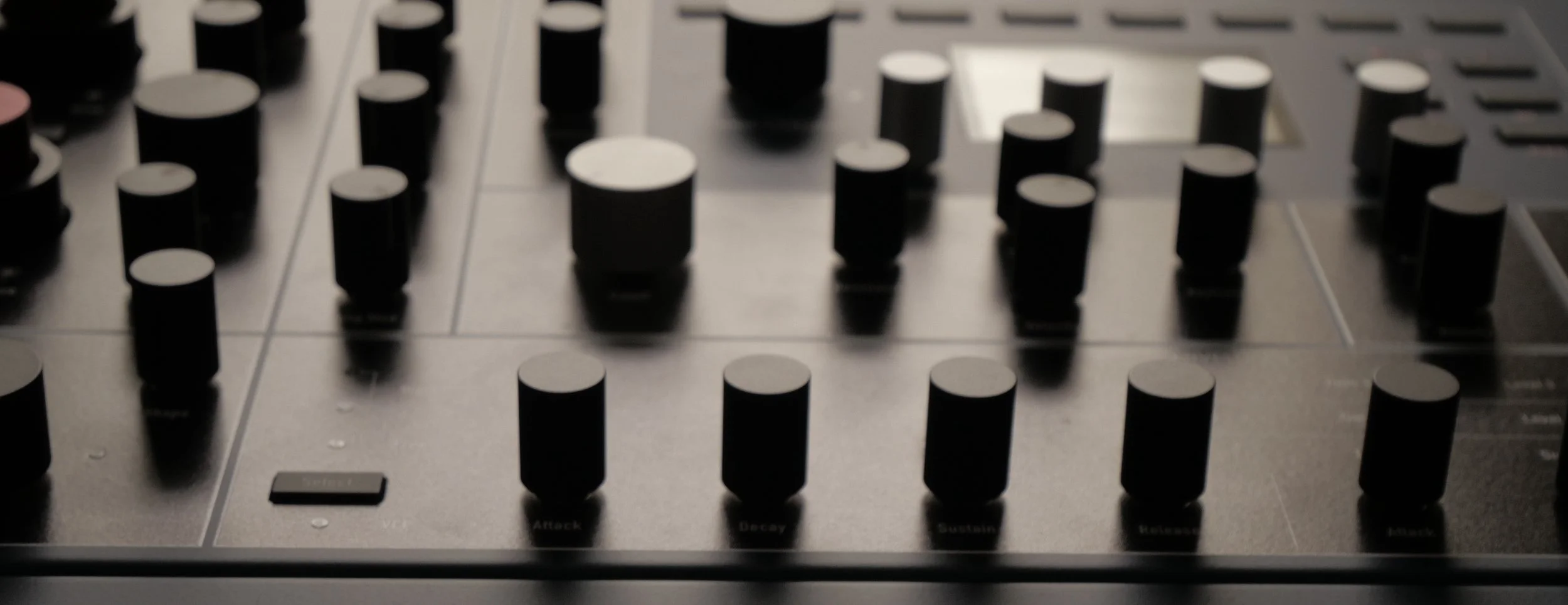M Review
I’ve recently had the opportunity to test out and play with a Waldorf M thank you to Zzounds.com. I love wavetable synthesis and have used a Blofeld in the past, so my hopes were high for this one. Nearly knob per function with two really cool looking red encoders, I was expecting an upgraded wavetable engine with improved ease of use. Before I begin my criticisms, I will say this synth looks incredible, the case is built like a tank, other than the somewhat flimsy side panels, the main knobs and encoders feel great, and the dual wavetable selector/position controls are neat. Things stop looking so pretty once you turn the unit on, the screen display UI isn just not very pretty, and I feel like this is a common issue with hardware. You spent time making a great physical design, you should compliment it with equally thought out display UI. I should also note before I continue more criticism, this synth was not designed for me or people like me, from what I gather it is more so an emulation of the classic PPG and Waldorf Wave synths, rather than a successor or upgrade. They’ve even included settings that emulate a sonic bug from old machines, in case you really need that exact sound. This old sound really shows in the M, the tables lack interpolation, there’s a good amount of aliasing and artifacts, and settings like ring mod, sync and digital filter don’t even work in the vintage emulation mode. If you’re looking for this vintage sound, or you are a purist for older gear, I don’t think my opinions can help you.
The synth engine is honestly quite insubstantial, you get two wavetables, noise, and a fairly decent analog filter. In modern mode the oscillators can be synced and a ring mod output is also available. The sync sounds ok, but gets very saw like fast, with a buzzing texture that easily overpowers harmonic characteristics. The ring mod is also quite raspy with very few sweet spots, unless you’re absolutely going for that thin raspy tone. The digital filters are a nice touch, you can find some sample rate reduction, typical filter curves, notch, a wavefolder, and a pretty decent sounding filter fm mod. Unfortunately this is all prior to the analog filters, which can’t really be driven from the internal engine, so as soon as you get into resonant territory you end up with fairly sweet but also boring filter tones. The analog filter is pretty good at enhancing sonic regions with low resonance, I’d just like to distort it and get a bit of analog grit in there. The wavetable selection is from their classic synths, you’ve likely heard most of them, and they are not up to modern wavetable standards in my opinion, but they are serviceable for simple sound design. I will say I enjoy the Clipper wavetable quite a bit, it’s really harsh, but fits well enough for some modern bass sounds.
The real downside to M is the modulation, While two LFOs are on the font panel, there is no front panel routing for LFO depth, meaning to even utilize 4 of the front panel controls, you must engage in a bit of menu diving. Envelopes are all laid out by default, and it’s very nice to use them without looking at a screen. The envelopes really highlight how powerful encoder UI can be, it is a bit odd that M is half encoders and half potentiometers, oddly enough, I wish it was just all encoders, with encoders you don’t have any confusion between front panel indication and stored preset values. M also includes a multi stage envelope, which requires two pages to edit, but I honestly didn’t even find any reason to use it, by the time I got to that level of detail I felt pretty uninspired. I truly regret saying this, I admit this as a failure on my part, as a sound designer I should be able to make the best of anything, and I’m sure decades ago, if this was the only digital synth I had ever used, I’d be blown away by it and spend countless hours exploring every table and filter combination. But my senses have been overloaded by a dozen or so modern wavetable synths that cover literally everything M can do besides that weird Derez bug. I do think it’s important to remind anyone reading, this synth isn’t really made for someone like myself.
One of the cooler things about M is the fact that it’s multitimbral and has 4 individual outputs, in this sense it could be a great tool for making basses or leads, especially if you ran each output into an effects chain or guitar pedals. Summing each input back into a mixer could give you a cool way to blend between channels and mix from one sound to another, especially considering the wide range of sound tones available from the wavetable selection. I’m really learning with time that I’m just not a huge fan of hardware, it seems like there’s often far too many shortcuts taken for the price. I understand that creating a physical product is expensive, and I do repeat that M is quite a magnificent machine to see on your desk. I do truly feel with a bit more polished UI, encoders for all controls, and a deeper sound engine, a device like the M could be a really powerful tool. But I wonder if the market for hardware is ready for something that is more akin to physical software than anachronistic vintage emulation. I apreciate M for what it is, and I’m sure there is a very specific audience for it, but be warned if you’re expecting something “new” this really isn’t it.


